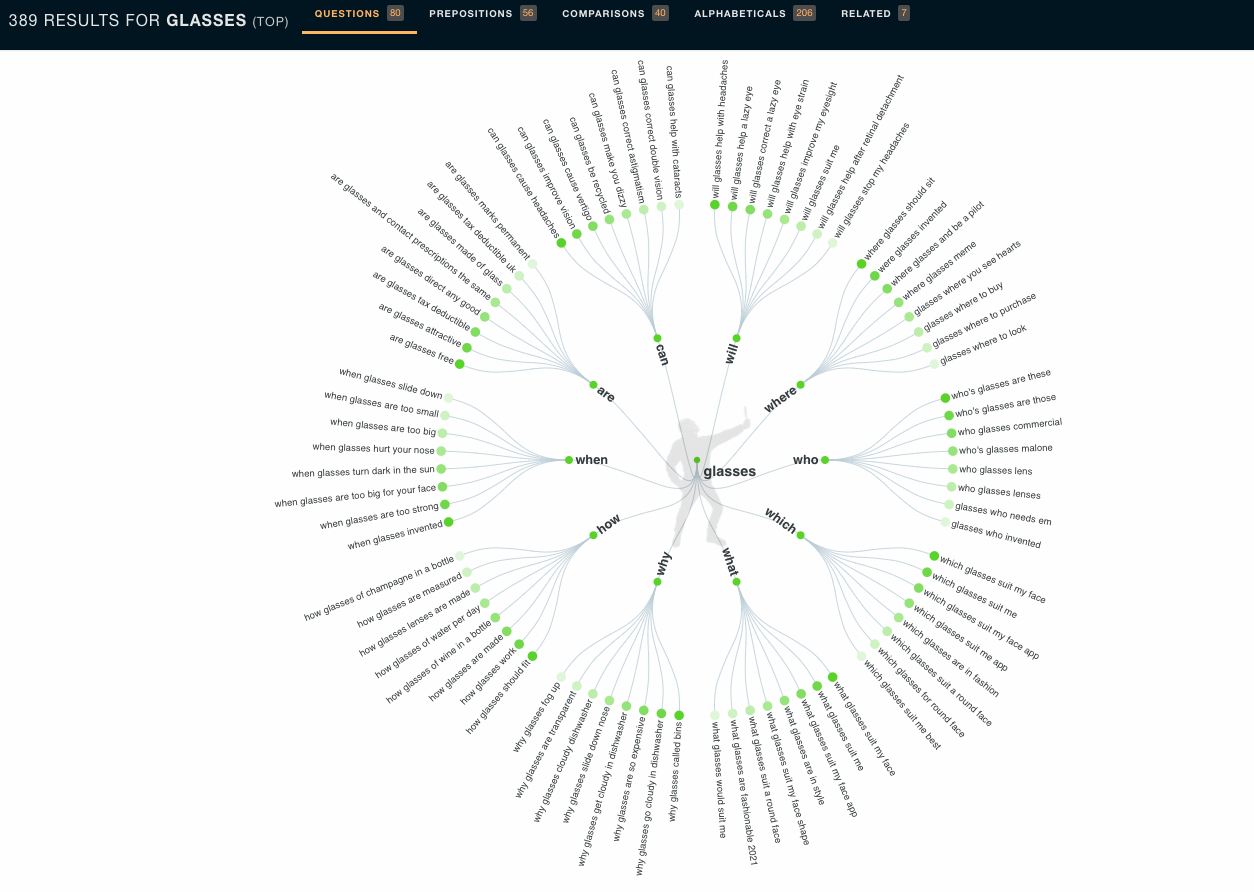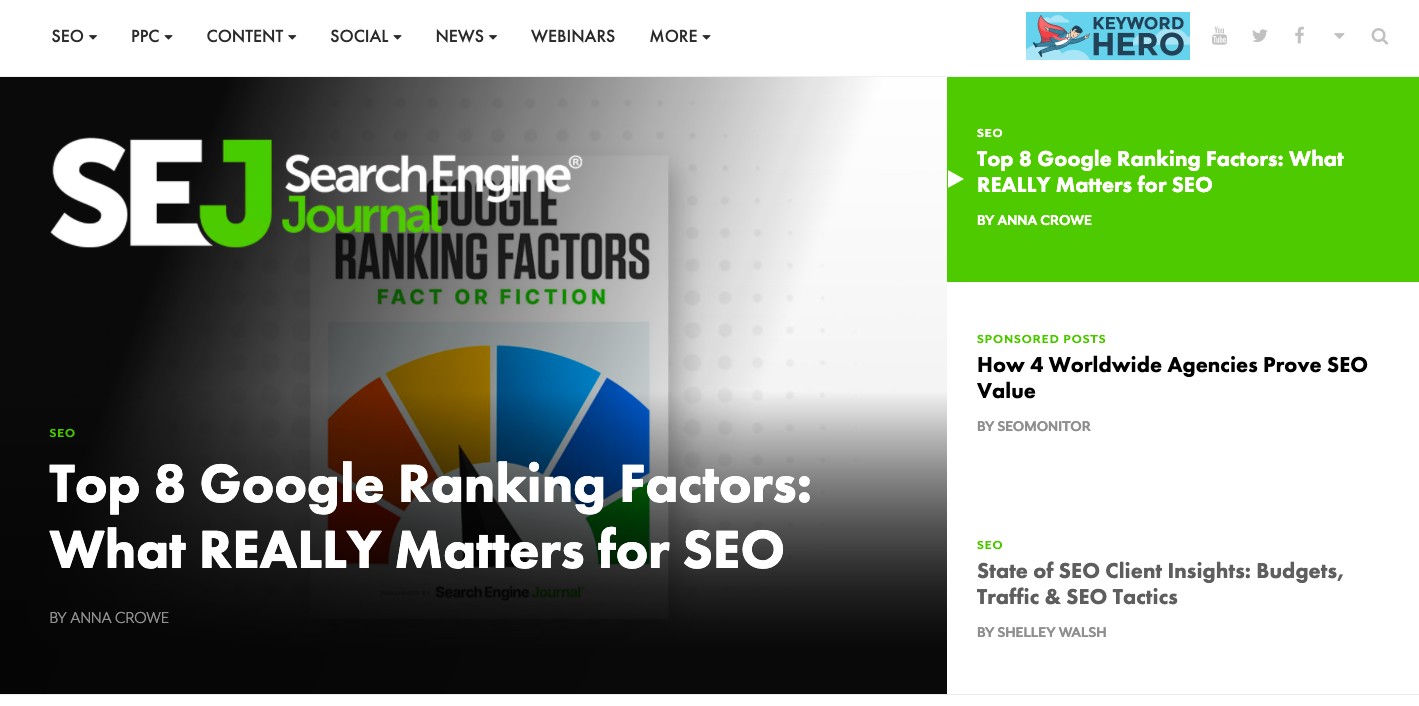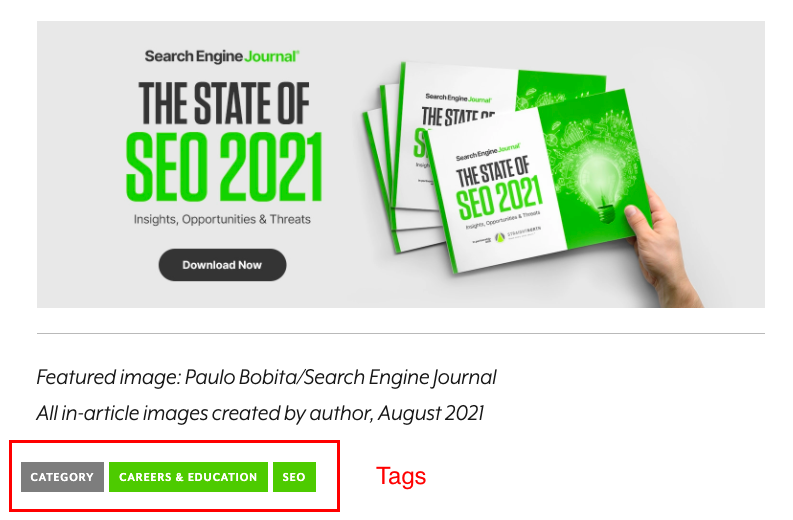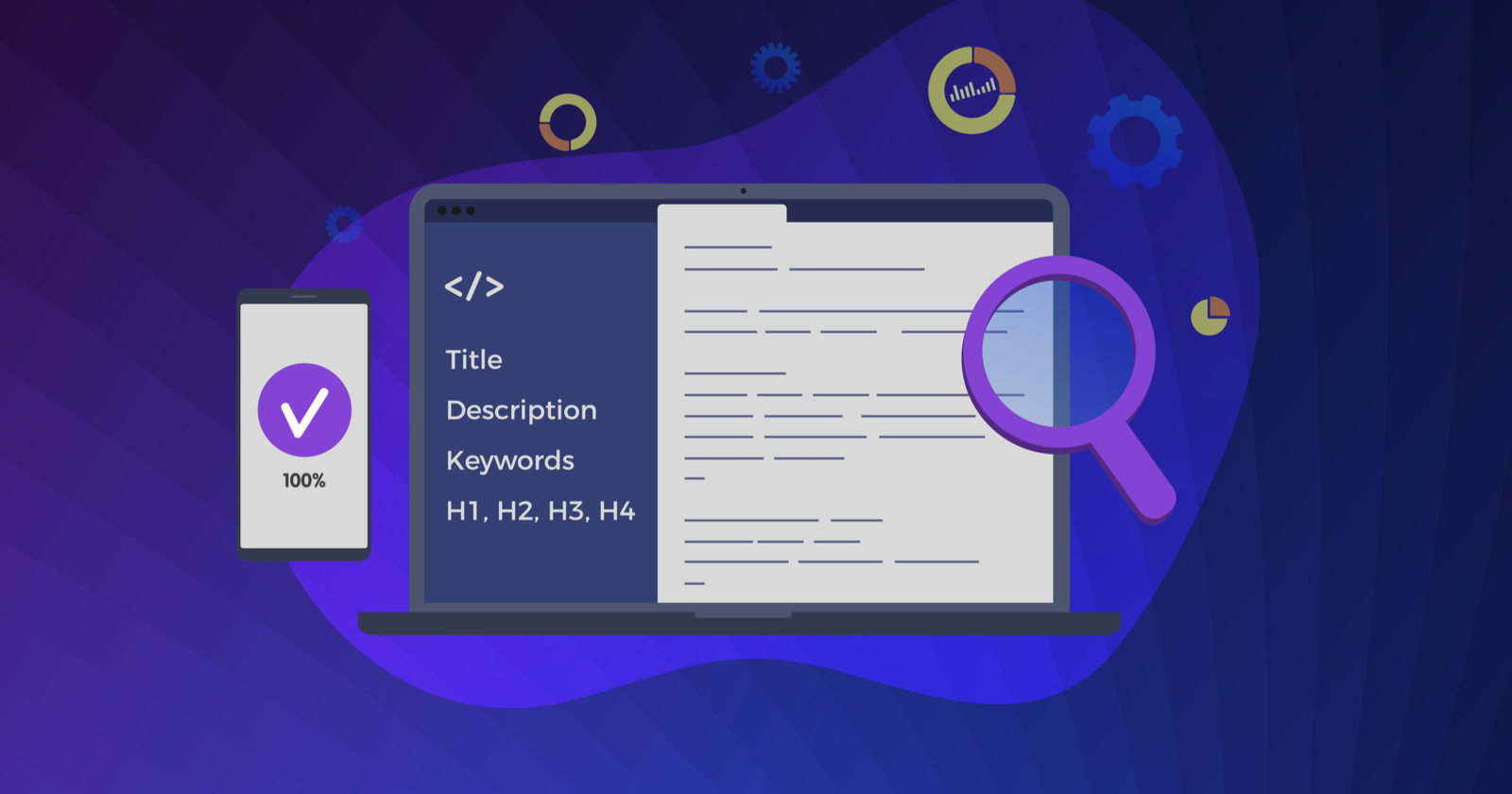When it comes to which search optimizations Google actually considers ranking factors, you’ll hear answers of anywhere from three main factors to hundreds or even thousands of them.
We took a deep dive into 88 of them in Google Ranking Factors: Fact or Fiction, where you’ll find expert analysis of the fact, folklore, and historic evidence around each one.
But not all of the things we do for SEO are about ranking.
The difference between SEO factors and ranking factors might seem like a matter of semantics, but it’s important to remember that SEO is about a lot more than just making it to the top of Google.
SEO also means optimizing for the searcher’s experience.
In this column, you’ll find five on-site SEO factors that matter most, with tips on how to put them to work for you.
Some will help improve your rankings, for sure; others benefit your site visitor’s experience, boost conversions, build your brand, and more.
Each of these should be on your radar and a part of your overall SEO strategy.
1. Content
Certainly, content is king. But simply having content is not enough to help your site rank for the keyword terms it’s targeting.
According to an Ahrefs study, 91% of online content generates no traffic from Google at all. So what do we know that search engines prize in content creation?
Content Relevance to User Intent
Understanding user intent is the future of search engine development.
Google’s algorithms are working tirelessly to better understand the syntax and semantics of user searches.
We’ve already seen some of the benefits this can offer in the form of answer boxes, knowledge panels, and more diverse search results for broad tail queries.
In fact, content relevance to user intent can be argued to be its most important ranking factor because if your content is not relevant to a search then it will be devalued.
How to Optimize
- Understand the intent of your keywords (informational, shopping, navigational).
- Analyze the SERPs for these keywords and see what type of content is ranking.
- Research semantic similarities to that keyword and optimize content around those terms.
Long-Form Content
Deep or long-form content addresses as many user concerns as possible, while providing fresh perspectives over a topic. Even search engines seem to prefer long-form content for many informational user searches.
A HubSpot study found that content with between 2,250 and 2,500 words tended to receive the most organic traffic. This seems to be the sweet spot for SEO, although creating pages much longer than 2,500 words, when necessary, can also be beneficial.
Becoming a master over your subject matter isn’t just beneficial for SEO, it can also help you become a thought leader in your industry and create additional business opportunity.
How to Optimize
- Research top ranking pages for a target keyword and analyze their content.
- Add semantically related keywords to flesh out content with additional sub-topics.
- Answer any and all questions users may have about that topic.

Organized Content
SEO tags still play an important role in content creation, despite the rise of semantic analysis.
Optimizing title tags and header tags can help with:
- Communicating the intent and syntax of your webpage document.
- Organizing your document to make it easier for users and search engines to read.
- Making pages more scannable.
- Helping your page pass the 5-second rule.
How to Optimize
- Insert focus keywords into title tags, URL slug, and page titles.
- Create header sections (H2, H3, H4s) using related keywords.
2. User Engagement
Ultimately, we design websites for both people and search engines. When designing for users, it’s always good to look at your website and website content from a fresh perspective.
Mainly, how engaging is my content and am I already bored with my site?
User engagement, or user signals, have long been suspected to be a ranking factor for Google, even if indirectly.
Regardless, user signals can be a good indicator of improvements that you need to make on your website.
Pages Per Session
The Pages per Session metric indicates how many pages a user views before leaving your site.
This metric, along with average session duration (the amount of time a user spends on your site), can be found in Google Analytics.
What this metric tells you is how interactive and engaging your site is, from a navigational perspective. Analyzing this, along with your behavioral flow, can shed some light on holes impacting your sales funnel or impeding conversions.
It can also show you how interactive and engaging your blog or news articles are. Usually, if a reader is consuming multiple articles in one session on your site, it means you are doing something right to satisfy their intent.
Tips to Optimize
- Analyze pages with high bounce rates and search for opportunities to encourage longer session durations or more pages-per-session.
- Insert calls-to-action on pages to encourage conversions.
- Provide additional navigation options within content, such as placing interlinks in body content or providing related reading materials.
Bounce Rate
Bounce rate is another confusing metric that is not a ranking factor but could either be positive or negative, depending on how you look at it.
Ultimately, your bounce rate indicates how satisfied users are with your landing page or website.
High bounce rates could indicate that your pages aren’t engaging and don’t satisfy user intent, especially for ecommerce pages. User bounces could also indicate that they are satisfied and got the answer they were looking for.
Tips to Optimize
- Tell a story or lead with a compelling hook.
- Get rid of intrusive interstitials and pop-up advertisements.
- Improve page load time.
- Ensure landing page copy is relevant to search queries.
Click-Through Rate (CTR)
Your website listing is the first interaction a user has with your site. CTR is one indicator of whether that interaction was successful.
A low CTR could indicate that your messaging is not relevant to a user search. It could also indicate that your meta description or title tag is not compelling enough.
Tips to Optimize
- Insert exact match keywords into title tags and meta descriptions so they are bolded.
- Add a benefit of clicking on this page (e.g., “BOGO”) into your meta description.
- Ensure your tags are the proper length so they don’t get truncated.
3. Technical Structure
Next, we need to consider how our technical structure is impacting user engagement and our keyword rankings.
Technical SEO could be considered the foundation of SEO where everything else is built on. Without a solid technical foundation, your house of content will crumble.
Crawlability
To get indexed, your website needs to be crawled. Search engine crawlers only have access to the links provided in your sitemap and available from your homepage.
This makes the practice of interlinking vastly important, which we will discuss later. For now, we will only concern ourselves with making sure our website is crawlable and out crawl budget is optimized.
Your crawl budget determines how many pages search engines will crawl during a crawl session. This is determined by your crawl rate and crawl demand.
Crawl rate is a measurement of how many requests per second a search engine spider makes to your site, while crawl demand determines how often search engine spiders will crawl your site (depending on how popular it is).
While most webmasters don’t worry about crawl budget, it’s a concern for larger sites. Crawl budgets allow webmasters to prioritize what pages should be crawled and indexed first, in case crawlers can parse through every pathway.
Tips to Optimize
- Create a sitemap using your CMS or Screaming Frog and submit it manually through Google Search Console and Bing Webmaster Tools.
- Block all pages you don’t want crawled or index by placing them under the disallow file of your robots.txt file.
- Clean up redirect chains and set parameters for dynamic URLs.
Security
Having an HTTPS secure website is very valuable for ensuring the security of transactions on your site. It’s also part of the Page Experience ranking factor for Google.
The number one technical error we find on clients sites is linking to mixed content or HTTP pages. This can occur during an SSL migration and arise from a number of causes.
While pages should theoretically redirect to their HTTPS counterpart, it still isn’t advantageous to have links to mixed content. More importantly, these links do not always redirect.
How to Optimize
- Contact your hosting provider for any issues that persist with SSL certification and implementation.
- Run a crawl of your website using Screaming Frog to identify mixed content errors.
- Place sitemaps in your robots.txt file independent of any user-agent commands.
- Rewrite your .htaccess file to redirect all website traffic to a specific domain using the HTTPS URL.
Clean URLs
Equally as important, you don’t want content that links to broken or redirected pages. Not only can this affect speed, but it can also impact indexation and crawl budgets.
Status code issues may appear naturally over time or due to a site migration.
Generally, you want clean URL structures with status 200 codes.
Tips to Optimize
- Run a crawl of your website using Screaming Frog to uncover 4xx and 5xx status codes.
- Use 301 redirects on broken pages to send users to a more relevant page.
- Implement custom 404 pages with available URLs to redirect traffic to relevant pages.
- Contact your web host provider for any 5xx errors impacting URLs.
4. Interlinking
Interlinking is important from multiple SEO perspectives:
- Crawlability
- UX and IA
- Content
- Link Building
If technical SEO is the foundation of a website then internal links are the doors that allow you to move from room to room.
But as websites grow older and businesses change, maintaining consistency across your site and a solid interlinking structure can be difficult.
Deep Links
Deep linking has served as an SEO best practice since the dawn of the internet.
Essentially, the idea is to link to orphaned pages on your site from a higher level category page to pass authority from one page to the other and also ensure that page gets indexed.
Creating an organized interlinking structure around similar topics allows lower pages on your site to pull some authority from higher authority pages.
It also provides users with additional actions to take on your site, such as reading more about a particular sub-topic or traveling to another section of your site.
Tips to Optimize
- Conduct a crawl to identify orphaned pages that are not being indexed.
- Use links strategically within content to pass along authority and provide additional reading content (2 minimum per post).
Organized Hierarchy
All websites are comprised of a topic hierarchy that is designed to communicate to users and search engines the purpose of each section of the site.
Go to a site like Search Engine Journal and you’ll see how the top navigation is designed to create a topic tree under the umbrella of digital marketing.

Tags are even implemented to help organize content and readers understand the context of certain topics.

Generally, your hierarchy should be designed from a top-down approach, allowing search engines to crawl and index certain pages under buckets or clusters.
Tips to Optimize
- Conduct user research to see what customers are searching for.
- Use keywords to optimize category pages and semantically related keywords for sub-category pages.
- Add breadcrumbs or links in footers for users to navigate back to a specific page.
5. Mobile Optimization
In the age of the mobile-first index, it’s absolutely crucial that your website is mobile friendly. The mobile first index has become Google’s primary ranking index, meaning it is updated before its desktop index.
When designing for a mobile user, it’s important to keep in mind the dimensions of the device itself, as well as different considerations for surfing on a mobile device.
For example, long-scrolls are preferable to links that force users to load another page and impede their surfing experience.
But generally, the two most important mobile factors include mobile-friendly design and fast page speeds.
Tips to Optimize
- Implement responsive web design.
- Tag pages with AMP code using your CMS.
- Improve page speeds by minifying onsite resources.
Conclusion
We may not have been able to cover each and every element of SEO, but this should serve as a foundation of areas to check during your next audit or website build.
SEO is a dynamic and organic industry and by looking at it from a more holistic point of view, we can better serve our users and survive changing algorithms.
Download Google Ranking Factors: Fact or Fiction to learn more.
More Resources:
- Learn SEO: The 38 Best Blogs, Resources & Publications
- The 15 Areas of SEO Knowledge You Must Master to be Successful
- SEO for Beginners: An Introduction to SEO Basics
Image Credits
All screenshots taken by author, September 2021





